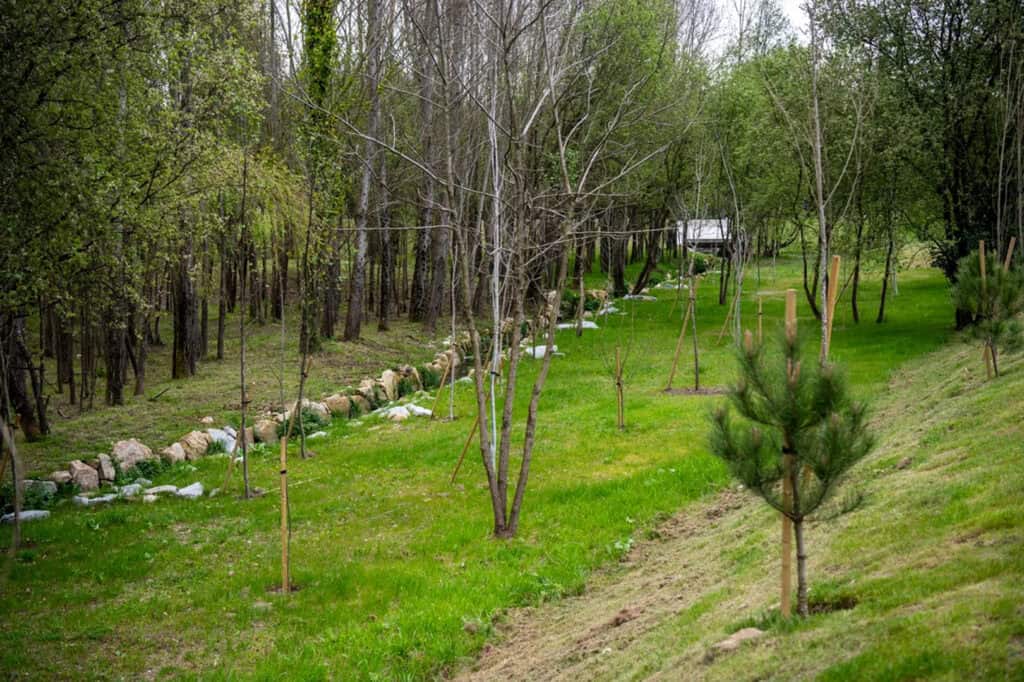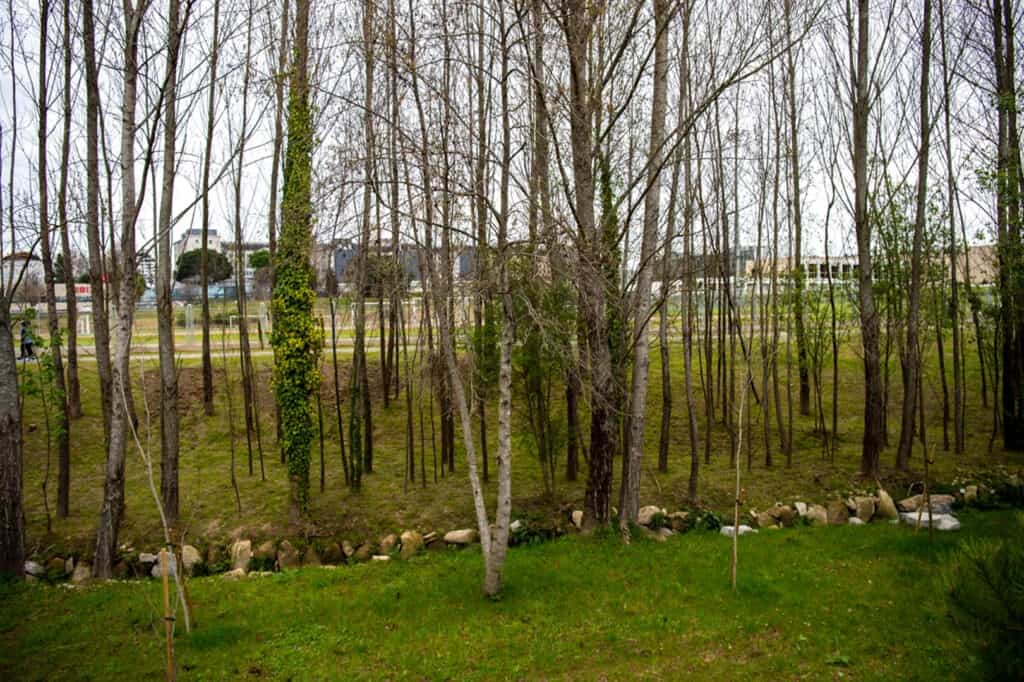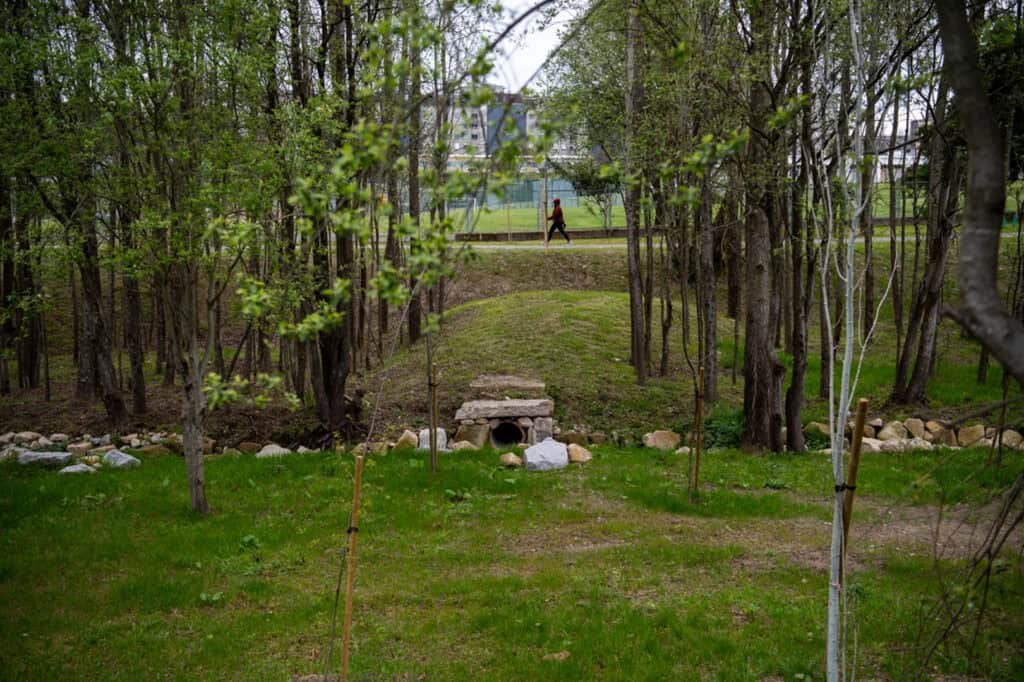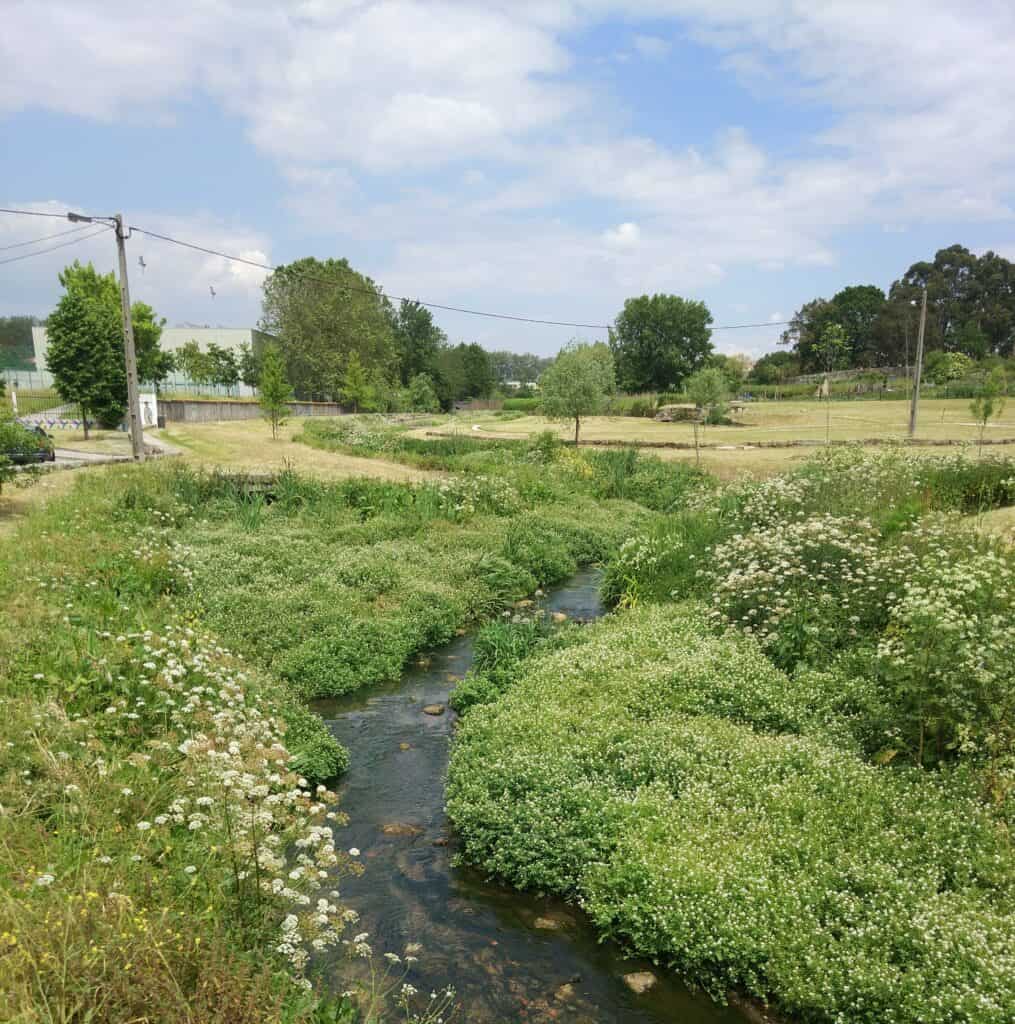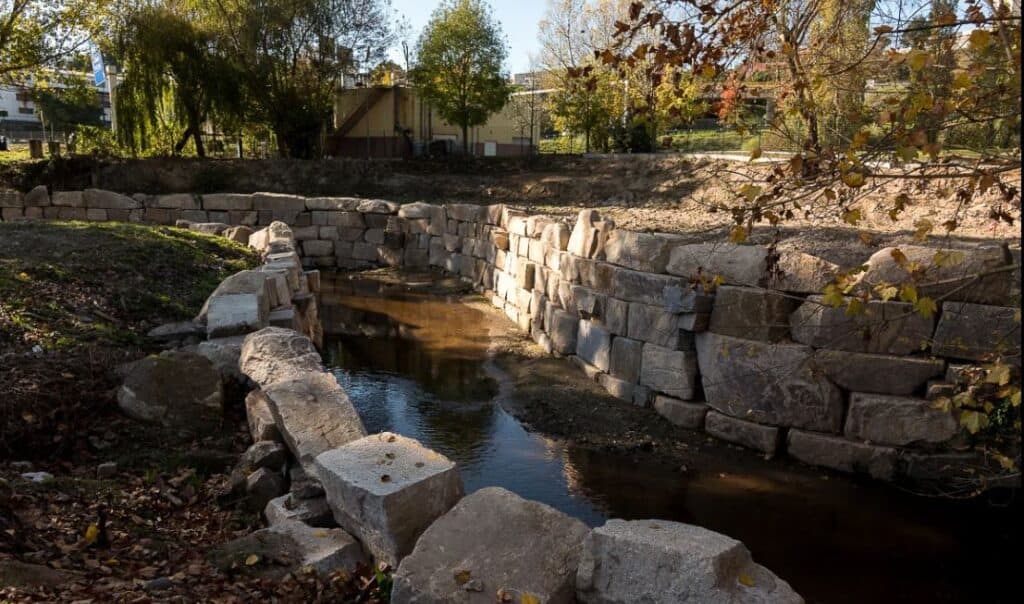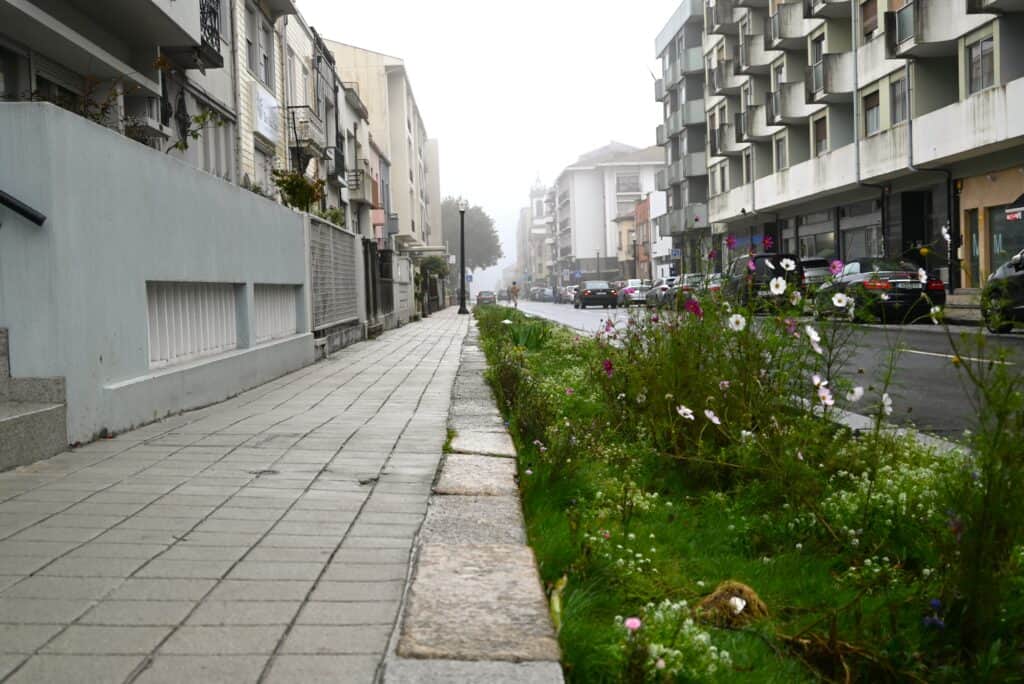The Ribeira da Asprela is a tributary of the River Leça. It rises in the parish of Paranhos, crossing the university campus, and is also known as the Ribeira da Manga.
It has been restored in several phases:
- Phase 1 – Outeiro section of the Ribeira da Asprela: this was selected as the pilot section for experimenting with different natural engineering techniques to stabilise its bed and banks (2009);
- Phase 2 – Quinta das Lamas section: consisted of removing 97 m of the Ribeira da Asprela, promoting the requalification and renaturalisation of this area (2015);
- Phase 3 – Parque da Asprela section: consisted of rehabilitating the bed and banks of the stream, using natural-based solutions, which made it possible to create 3 retention basins that can accommodate more than 10,000 m3 of water during rainfall events (2022).
Some of the interventions were identified in the Plano de Valorização e Reabilitação das Linhas de Água do Município do Porto (PVRLA), which aims to promote the protection and valorisation of the rivers and streams of the city of Porto in order to better adapt to the effects of climate change. The plan will be followed up by a wider project – Porto + Permeável – through which many of the measures presented will be implemented.
